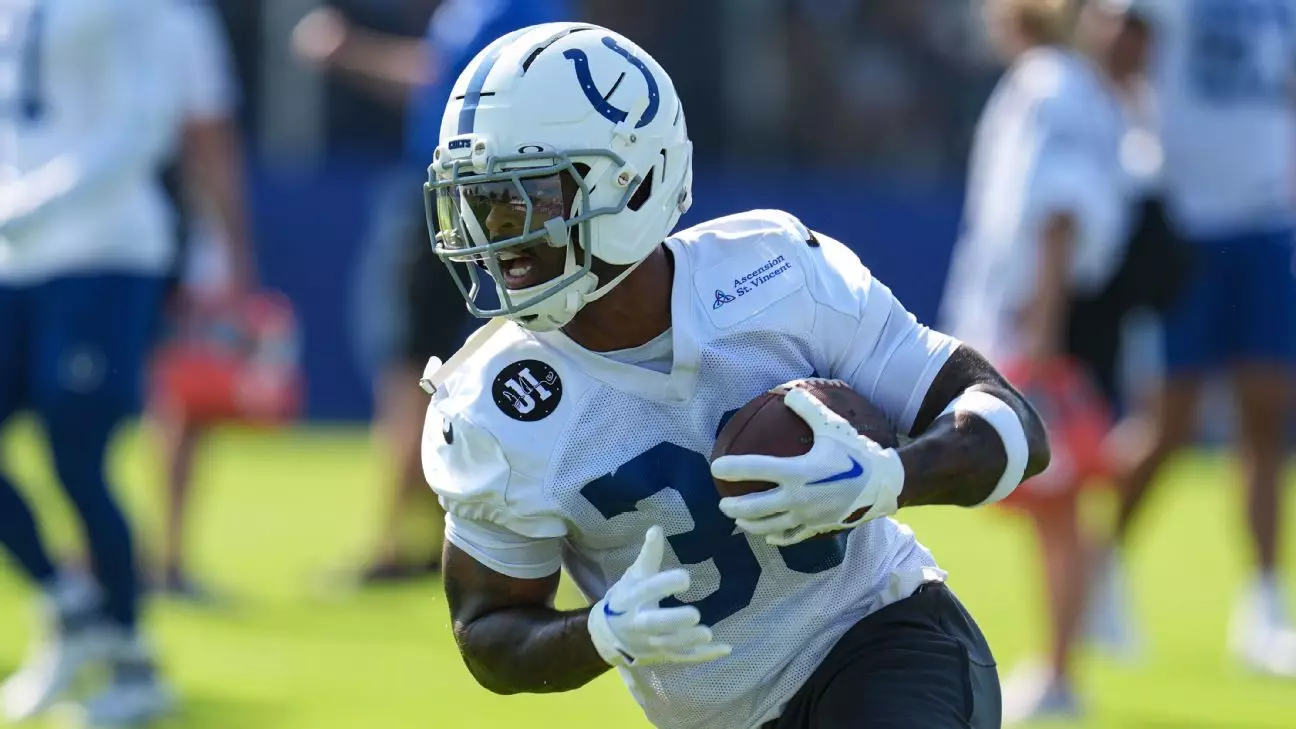Football, often lauded for its display of grit and physicality, has long marketed itself as the epitome of resilience and strength. However, recent incidents, such as Salvon Ahmed’s severe injury during Colts’ training camp, shed light on a more troubling truth: the dangerous push for toughness can come at a devastating cost. The eagerness to simulate real-game conditions, including “live” tackling practices that prioritize toughness over safety, often obscures the fundamental priority—player health. While coaches and players may champion a culture of relentless grit, it often neglects the harsh reality that football’s brutal nature can lead to career-ending injuries and lifelong consequences.
Ahmed’s injury, caused during a “live” drill, exemplifies the risks inherent in glorifying such fierce training practices. The play involved a forbidden hip-drop tackle—a technique banned last season due to its high injury potential—yet it still found its way into the drills. This underscores how sometimes, the quest for an edge can override safety protocols, further endangering athletes. The severity of Ahmed’s leg injury—an alarming lower right leg trauma—serves as a stark reminder that the pursuit of physical dominance should never eclipse player well-being.
The Culture of Tolerance for Risk and Its Ethical Implications
Some might argue that football’s inherent violence is part of its identity—a brutal sport that demands toughness to succeed. However, this mindset dangerously normalizes unsafe practices. Teams like the Colts, attempting to balance realism in practice with safety, are often caught in a moral dilemma: how much risk is too much? The decision to proceed with the last practice segment despite Ahmed’s injury reflects a troubling acceptance of danger as an integral part of the game.
The emphasis on “creating an edge” and “toughness” risks turning players into commodities, where their physical health becomes secondary to performance metrics. Coaches encouraging more live tackling for “identity formation” overlook the ethical responsibility to protect their athletes. The sporting world must reconsider whether a culture that seemingly values aggressive training more than safety is sustainable or morally justifiable.
Long-Term Consequences and Systemic Flaws
The incident also exposes deeper systemic flaws within football training paradigms. The fact that even with banned techniques, dangerous plays still occur highlights the inconsistent enforcement of safety standards. The repeated cycle of injuries hints at an ingrained culture resistant to change. Players, especially backups desperate for reps, might feel compelled to accept these risks to prove themselves, perpetuating a cycle of injury and sacrifice.
Furthermore, Ahmed’s injury raises questions about how the sport balances short-term competitive gains against long-term health. Do teams genuinely prioritize player wellness, or are they driven solely by wins, paycheck security, and locker room bravado? The silence around injury prevention programs and the marginalization of player safety in favor of aggressive tactics reveal a systemic imbalance that needs urgent correction.
A Call for Revolution in Football Culture
This injury should serve as a wake-up call to critics and defenders alike. Football’s brutal image has been exaggerated as a badge of honor, but it is precisely this ethos that endangers athletes’ futures. A more realistic, humane approach to training—one that acknowledges injury risks and actively works to mitigate them—must become the norm. Coaches should prioritize technique, discipline, and safety over reckless attempts to embody toughness.
This shift demands courage from leadership across the league to challenge the traditional notions of masculinity and resilience that have historically glorified pain and injury. It is time for football to modernize, recognizing that a champion is not only measured by resilience but also by the respect and responsibility shown towards its players’ well-being.
In a sport with immense cultural influence, there lies a profound responsibility to redefine toughness—not as risking everything, but as safeguarding what makes the game worth playing: the athletes themselves.


Leave a Reply